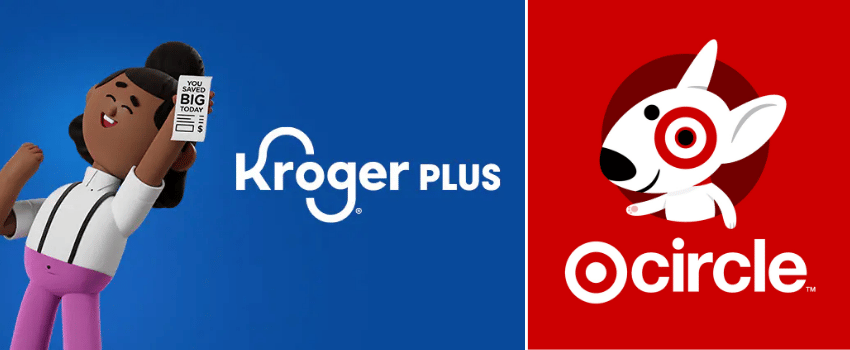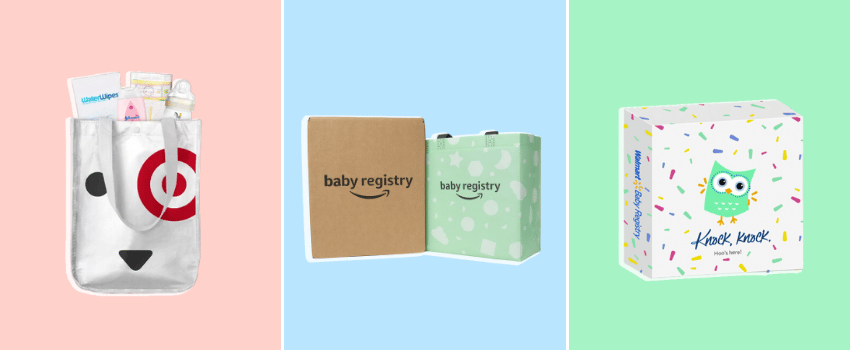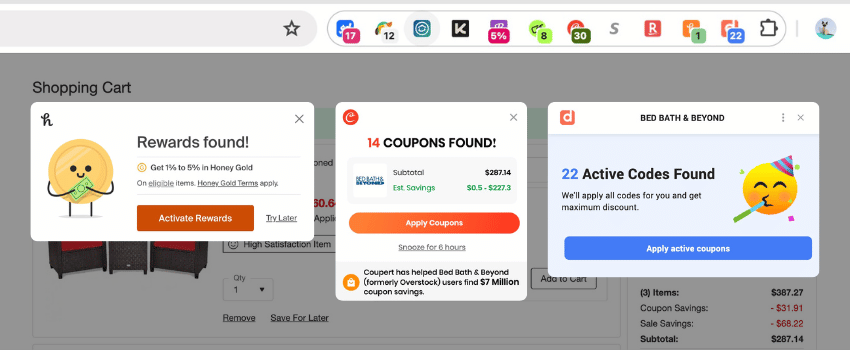5.00 out of 12 votes

Which is Better? The Case of Online Shopping vs In-Store Shopping in 2021
Updated 11 min read
Market trends and technological advancements have enabled the rise of e-commerce and changed the way consumers shop.
Recent global events have especially propelled online shopping, with many consumers needing or wanting to stay at home because of safety and health concerns.
However, while online shopping has taken precedence of late, brick-and-mortar stores are still holding their own in today’s changing shopping landscape. As restrictions ease up, more consumers are going back to their favorite physical stores.
But which one is better for your shopping needs?
To better understand the unique experiences each one offers, let’s explore some figures and compare the pros and cons of e-commerce and traditional shopping.
Online Shopping vs In-Store Shopping Statistics
Online Shopping Statistics
- 96% of consumers tend to do their research online for big purchases.
- It’s estimated that by the end of the year, the number of online shoppers will reach 2.14 billion worldwide or 27.2% of the world’s population.
- The number one reason why consumers shop online is free shipping or delivery. This is followed by coupons or discounts, customer reviews, hassle-free returns policy, and a quick online checkout process.
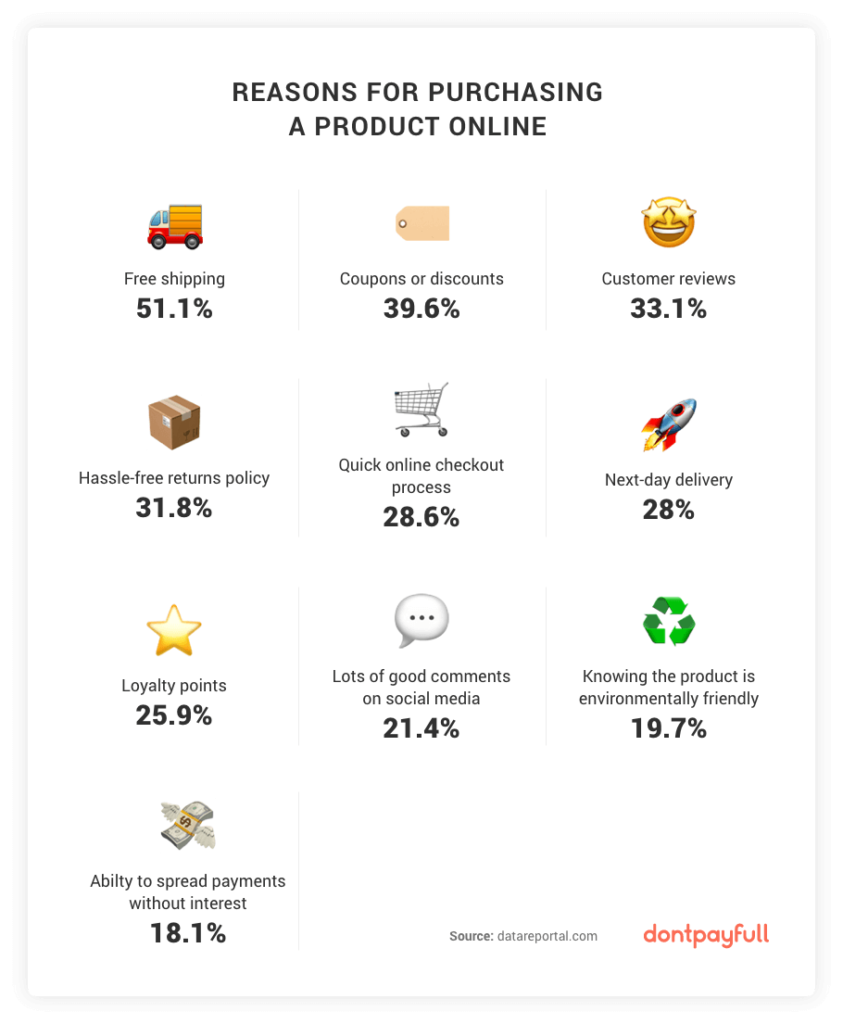
- In the US, the number of online shoppers has risen to 230.5 million in 2021, compared to 209.6 million in 2016. Worldwide, there are currently more than 2 billion digital buyers in 2021, compared to 1.32 billion in 2014 and 1.52 billion in 2016.
- 43% of global internet users turn to social networks to research products.
- Online shoppers come from a variety of traffic sources, the most popular of which are direct to site, email, and search. This is based on the average order value of shopping orders by traffic source. There’s a sharp increase in the average order value that comes from direct navigation (at $137.76) during the second quarter of 2021. This is followed by search (at $115.46) and email (at $103.14).
- Retail e-commerce sales worldwide reached USD 4.28 trillion in 2020.
- It’s estimated that e-commerce sales worldwide will reach up to USD 6.5 trillion by 2024. If the trend persists, e-commerce sales could reach USD 8 trillion by 2025.
- 58.6% of US shoppers abandon their cart because they’re not ready to make a purchase. However, one of the top reasons why people abandon their cart (49%) is extra costs, such as shipping, tax, and fees, that are too high. Other reasons for shopping cart abandonment include sites requiring shoppers to create an account (24%), slow delivery (19%), complicated checkout process (18%), and not being able to trust the site with the buyer’s credit card information (17%). If projected in figures, cart abandonment amounts to losses worth $260 billion.
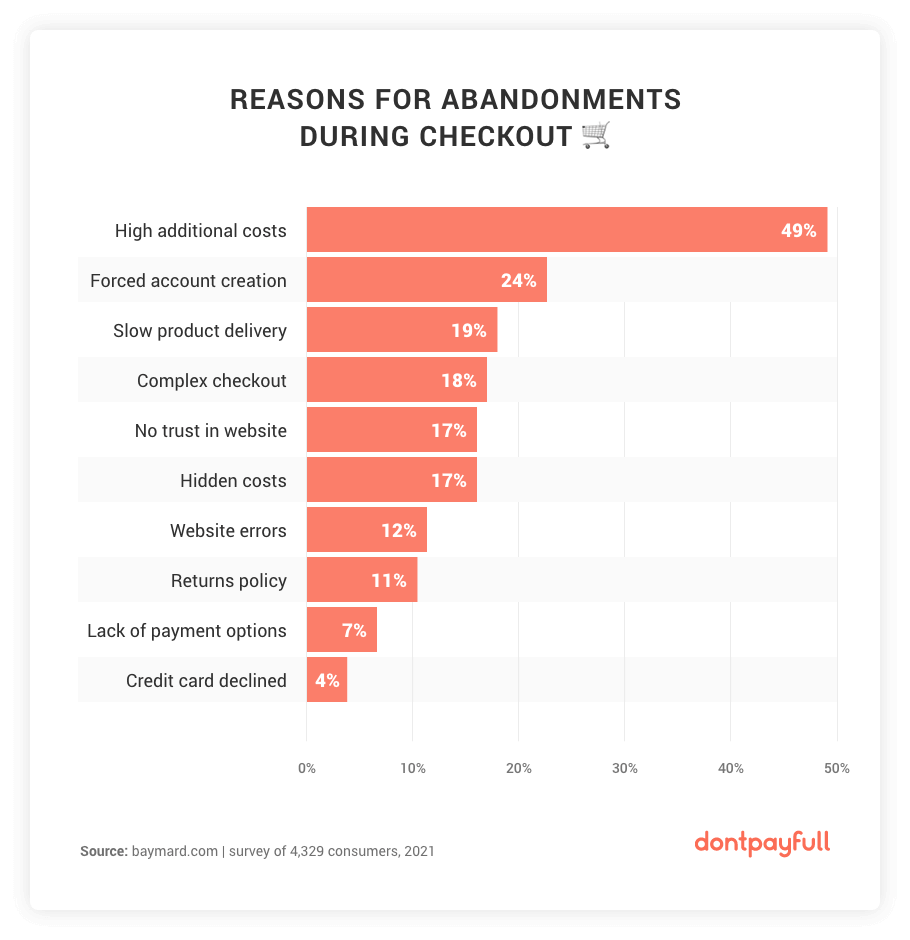
- In 2020, clothing and footwear had the largest revenue share in the B2C sphere, reaching 24.71%. It’s expected that the global B2C e-commerce market will enjoy a compound growth rate of 9.7% from 2021 to 2028.
- Key players in the B2C e-commerce market include Alibaba, Amazon, ASOS, eBay, PayPal Holdings, and Craigslist.
- Customer satisfaction in retail fell to 75.5 out of 100 in 2020, a 2.3% decline. Reasons for this decline include mandatory store closures, delayed deliveries, and sold out high-demand items.
- Buyer satisfaction is critical for retailers, as it can significantly impact their brand reputation and revenue. Improving in-store customer service and offering personalized experiences can boost customer satisfaction levels and increase customer loyalty.
In-store Shopping Statistics
- In-store shoppers are twice as likely to spend more on purchases, especially if they’re priced at $100 or more.
- Nearly 80% of shoppers will go to a brick-and-mortar store to purchase something that they want or need immediately. 61% of shoppers prefer shopping with brands that have physical stores compared to ones that only have an online store.
- It’s predicted that sales through brick-and-mortar stores will rebound within the year and the following year, as restrictions ease and more vaccines are administered.
- By 2024, it’s estimated that in-store shopping sales will hit $21.4 trillion. The National Retail Federation estimates that physical store sales in the US will exceed $3 trillion in 2021.
- 80% of global consumers now feel more comfortable or very comfortable visiting physical stores, compared to 71% in 2020. Consumers also reported missing some elements that only physical stores can offer, such as the ability to touch and try products (45%), being able to shop with friends and family (35%), and being able to bring their purchases home immediately compared to waiting for them to be delivered (35%).
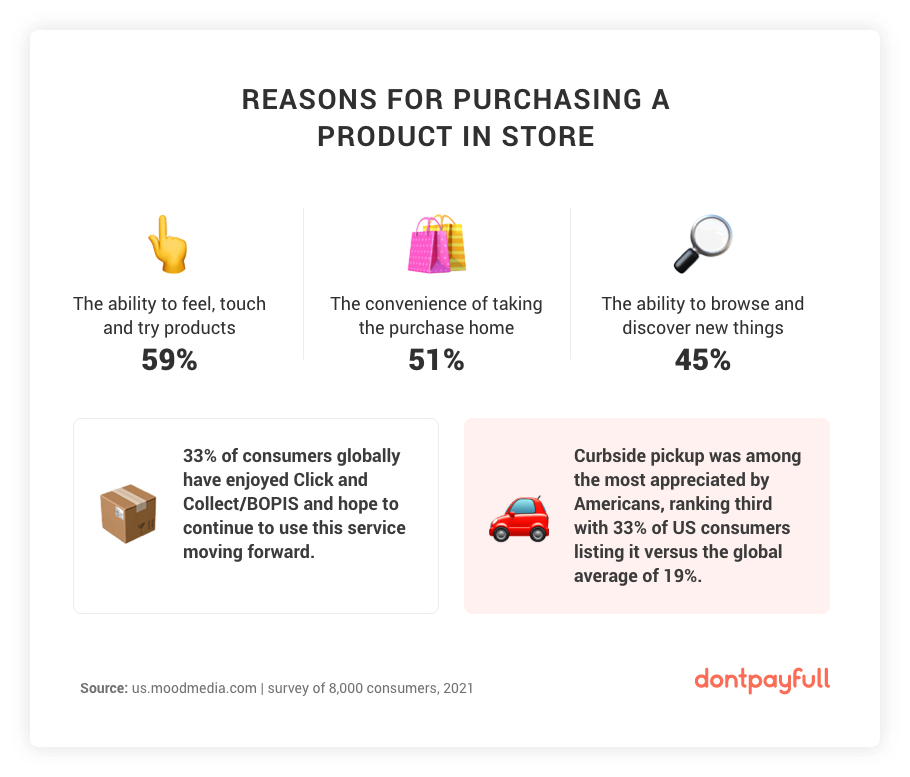
- While many shoppers are still not visiting physical stores as frequently as they did pre-pandemic, 29% share that they’re spending more money per visit.
- It’s predicted that in 2021, brick-and-mortar retail sales will bounce back to a 1.6% gain. In 2020, brick-and-mortal sales fell to 3.2%.
- Brick-and-mortar stores are staying competitive. Some physical stores have incorporated more digitally-friendly approaches such as contactless payment, self-checkout, and digital signage.
- If given the choice, 46% of respondents would prefer to shop in-person. With the onset of the pandemic, 40% of the study’s respondents reported that they visited physical locations less frequently.
- To stay competitive, physical stores are making an effort to improve offline customer experience. 29.8% of respondents noted that in-location customer service improved compared to last year.
- Positive offline experiences play a major role in improving not only how consumers perceive a brick-and-mortar establishment but it can also boost sales. 90% of consumers from the Raydiant study shared that they’re more likely to return again to a physical location following positive offline experiences, while 61% said that they’re likely to spend more.
- Brand loyalty is lacking, with 48% of respondents saying that they’ve replaced products they typically purchased at brick-and-mortar stores with that of their online alternatives. 25% shared that they switch brands more often.
Advantages of Online Shopping

Online shopping opens a world of choices for customers. Aside from convenience, it’s also a starting point for introducing innovative technology that can change the way you shop. For example, brands are looking into augmented reality (AR) to create a more immersive and engaging shopping experience that attempts to emulate the in-store experience of being able to try on clothes and see how they would look on you, albeit virtually.
👍 Access to Exclusive Sales and Offers
Brands are also offering exclusive online sales or coupons that further encourage consumers to make online purchases. Even grocery shopping has moved online, as many grocery stores are now partnering with or acquiring third-party services, such as Instacart and Shipt, to offer same-day grocery delivery to consumers.
👍 Having Plenty of Options
When you’re shopping online, you’ll have access to an assortment of products under every category imaginable. For example, Amazon has over 75 million products under categories like books, electronics, home and kitchen, and tools.
You’ll have access to more variety because stores won’t have to deal with storage limitations. Plus, you’ll be able to buy items not only from local providers but also from international brands.
👍 Finding Niche Items
With the help of search engines like Google, it’s become easier for consumers to look for niche or uncommon goods. Compared to traditional shopping, where you’d have to scour store after store to look for niche finds, with online shopping, you only need to do an online search to find answers.
👍 You Can Easily Check Customer Reviews
Online stores have websites that also display verified customer reviews. By checking what other customers are saying about a product, you can determine early on whether it’s worth buying or not.
👍 Online Shopping Gives You an Idea of How Much You’re Spending
You can add to the cart and check your total, making it easier for you to stick to your budget. If you go over the budget, you can always remove items from your virtual shopping cart.
👍 Shopping in the Comfort of Your Own Home
Some consumers prefer online shopping because it makes it easy for them to shop anywhere, anytime. There’s no need to worry about a store’s business hours, and you can avoid crowds.
👍 Other Advantages of Online Shopping
Other unique advantages of online shopping include being able to easily compare prices, having the option to get your purchases to be delivered to friends or family, free shipping offers, and access to wholesale prices.
Advantages of In-Store Shopping

One of the most compelling reasons why people prefer traditional shopping is because it delivers a unique in-person shopping experience.
✏️
Note: Brick-and-mortar stores are also keeping up with recent technological developments. Many physical stores are now looking into incorporating artificial intelligence, particularly intelligent automation, to enhance consumers’ in-store experience.
👍 Access to Better In-Store Shopping Experience
You’d be more likely to receive great customer service when shopping in physical stores because you’d be able to interact directly or immediately with a sales representative, giving you a more personalized shopping experience.
👍 More Ways to Save
It’s relatively easier to save money when you’re shopping in physical retail outlets because you can avoid shipping costs as well as other fees.
👍 Immediate Access to Products
You also won’t have to wait for days, weeks, or even months to get your hands on the products you bought. With in-store shopping, you can take home and use your purchases, like toilet paper or video devices, immediately.
👍 Abundance of Sales
There’s no shortage of retail sales in physical stores as well. Some online sales, like Cyber Monday, have made their way to brick-and-mortar stores. You can also get access to exclusive in-store promotions such as free giveaways or special promotion offers.
👍 You’re Able to Share the Moment with Loved Ones
You can transform an ordinary trip to the store into something special by sharing the experience with loved ones. You can meet up with friends and shop together or relax with your family in a restaurant or café after a long day of shopping.
👍 You Can Scrutinize Products
In physical stores, you can immediately evaluate the quality of products and scrutinize them for any issues. For instance, when shopping for produce, you can easily determine the freshness of vegetables. For meat, you’d be able to select the type of cut you prefer.
This also lessens the likelihood of returns because you’re able to test or try products, such as clothes or makeup, yourself.
👍 You Can Have More Secure Transactions
Unlike online shopping, which is open to the risk of fraudulent transactions, in-store shopping provides consumers with a more secure way to shop. Plus, you’re less likely to encounter scam stores.
What’s the Verdict?
This might sound like a cop-out, but there’s no straightforward answer to which shopping method is better. Even with digital and technological advancements, consumers are still looking for retail experiences more than they do simple and “meaningless” transactions. Which one you opt for will ultimately depend on your personal preferences.
FAQs
How Much More Does a Customer Spend on Online Shopping Compared to In-Store Shopping?
While online shopping is becoming more popular, shoppers are actually spending more for in-store purchases. 71% of consumers shell out more than $50 when shopping in-store, while 34% spend more than $100 in physical stores. Additionally, 78% of men and 89% of women tend to have impulse purchases when shopping in-store.
What’s the Percentage of People Shopping Online vs In-Store?
40% of consumers shop at physical stores at least once a week while only 27% do their shopping online. This indicates that consumers still prefer in-store shopping compared to online shopping. Furthermore—this might come as a surprise—81% of Gen Z shoppers still prefer to shop in stores, as this allows them to disconnect from the digital world.
How Do Brick-and-Mortar Retail Stores Compete with Online Stores?
To stay competitive, brick-and-mortar retailers have taken measures that can improve access and convenience, such as launching their own websites, partnering with third-party delivery services, and delivering customized in-person customer experience.
Editor’s Note: This article was originally published on November 23, 2016, and has been updated for accuracy and freshness.
Do You Have Any Suggestions?
We're always looking for ways to enrich our content on DontPayFull.com. If you have a valuable resource or other suggestion that could enhance our existing content, we would love to hear from you.
Was this content helpful to you?

